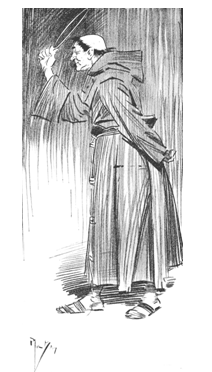Sanskrit Pronoun: The “unspecified” about the mother of languages.
Well, Sanskrit pronoun are important. They assist humans with the goliath task of being lazy. (You know what I mean, how many times have we said, “give it to her”, and the listener has stared blankly having no clue, who “her” is.
Sanskrit pronoun are determined based on three factors, the first one being case, case refers to the category to which a word belongs, this refers to eight cases mentioned previously,the second factor is number, that is, if a word is used in singular, dual or plural and the third factor it is based on is gender. Always remember that Sanskrit takes into consideration three genders, which are singular, plural and nueter.
It is important to note that it is these three categories based on which the distinctions are made.
The most important pronouns in any language are the pronouns used for a first and second person. It is important to note that unlike the English language, in Sanskrit, separate provision is not made for gender, however, it is the factor of a number, that is if the word refers to singular, dual or plural, it is based on this distinction that the first and second person pronouns are classified. As far as accusative, genitive, and dative cases are concerned, the form of the first and second pronouns in these are enclitic, that is, a word is added after the initial word.
This can be explained with an example, in dative case, the singular “mayhem” is given the enclitic, of “me”
While dealing with Sanskrit grammar, it is important to keep in mind that it does not have a third person pronoun, unlike English. That brings us to the second category of pronouns, that is, Demonstratives. Demonstratives are used independently and can do the function of the third person pronoun. In the Sanskrit language, the four different demonstratives and their functions can be described with the help of a table.
Words |
Meaning |
| Tat, adah | Used to signify objects which are far away |
| Edam, itah | These are used for objects which are nearby. |
But. In every language, there is a “but”, one exception that takes you by surprise and there is no given explanation.
The exception here is the singular form of that, sah remains say when added with what in English is known as “that”, however, it should have changed to “so”. Told you right, there are exceptions and no possible explanations for them. The declination of “eat” is similar to “that”.
As mentioned previously, it is only through inflections and deflections that the words are categorized in the Sanskrit language. You would expect ease and similarity of pattern at some point, but lo and behold! The idam demonstrative comes with its own set of irregularities, and there are three genders, three numbers and eight cases to be considered, but we shall try our best.
As far as the idam demonstrative is concerned, it is only the nominative singular which creates irregularaties, because unlike the other cases, in which pronouns are formed from an –a or an –im , in case of normative singular, it is formed from, well, the normative singulars are not made from –a or –im.
The third and the last demonstrative is adah, phew! The dominating stem in this case is “u”, and wherever “ui” is used, it is replaced with simply “i’’
Well, exceptions aren’t letting us be, so here the exception is normative dual and instrumental singular. They are formed like nouns of u-stem, remember nouns?
Now let us come to the Polite pronoun. Well, it is what you think.
However, unlike the saint in the picture, the Polite Pronoun is not direct. The Polite pronoun comes from the word,” bhavant”, which means Your Honour. The term Your Honour can be used in both first person and second person, for example, in a court,
Lawyer to the judge: Your honour should spend some time on this case.
In this sentence, your honour is in the second person. As it refers to the judge, however, what we are referring to is the honour of the person, therefore, it can assume third person connotations as well.
Let us go to Enclictic pronouns, however, lets not spend too much time on them as they are used only in oblique cases.
But brace yourself for some more inflections and exceptions coming your way, because next, we are going to deal with the kyt series pronouns. Firstly, let me make it clear what kyt stands for.
K-kim.
Y-yat, the relative pronoun of kim.
T- tat, remember the irritating demonstrative pronoun we met earlier?
As it turns out, Kim and Yat function on the similar lines as TAT, Kim remains Kim when it should have turned into kat, yat also resembles kat, it involves replacing t or s with y.
Now let us come to indefinite phrases, indefinite phrases are formed in two ways, the first way is by inserting a relative pronoun before an interrogative pronoun and the second way is the usage of lukewarm words like kim. Kimcit, which means “something”, pun intended!
Now let us come to reflexive pronouns and prenominal adjectives. Reflexive pronouns are those which do not indicate anything specific, they can refer to a number of subjects and people. For example Atma. Prenominal adjectives refer to adjectives declined on the basis of that and not a-stem.
All in all, Sanskrit Pronouns might make things difficult if not understood correctly.



